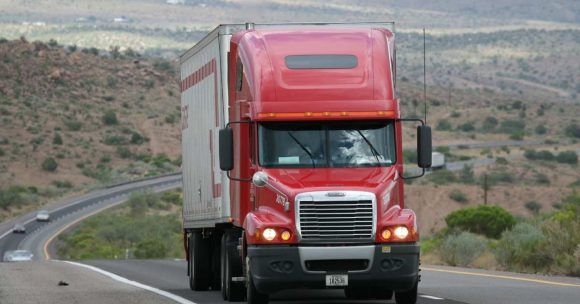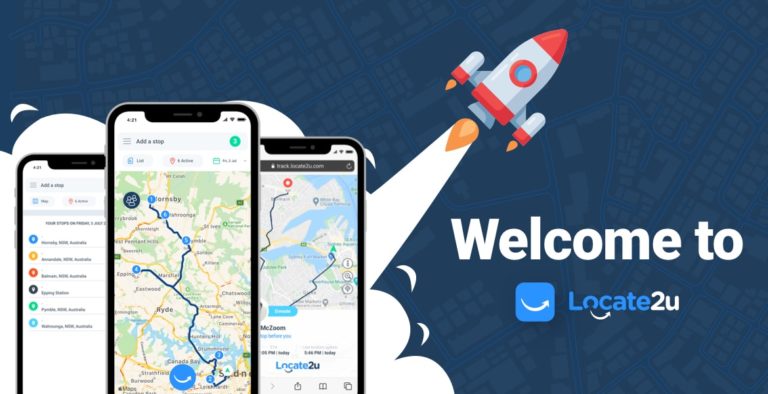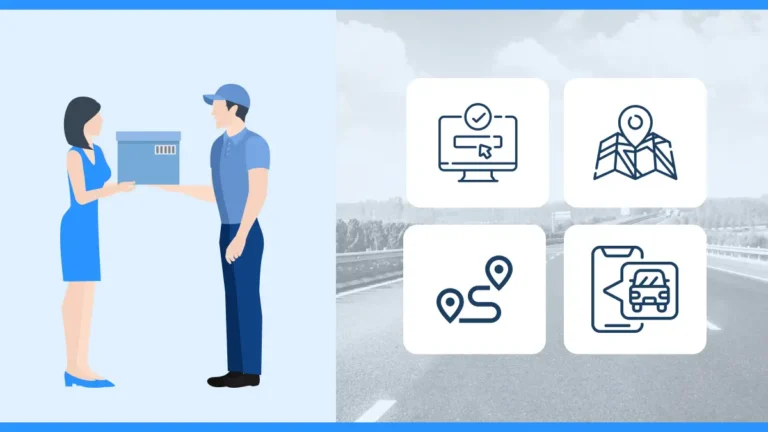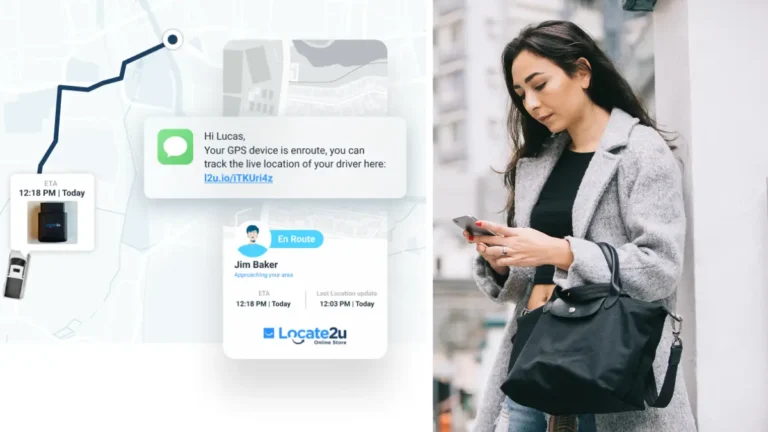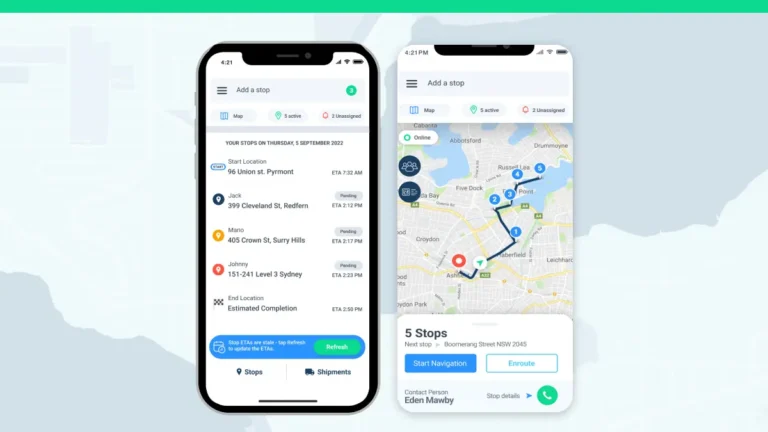You run a logistics business, your trucks are crisscrossing the country hauling freight, and you’re juggling operations with spreadsheets, phone calls, and sheer willpower. Fleet management software is your answer here, offering a comprehensive fleet management solution.
You know how quickly things can spiral out of control—late deliveries, lost cargo, and that gut-wrenching moment when a truck breaks down in the middle of nowhere.
This article breaks down how fleet management software can change your haulage operations for the better, save you money, and make your life a whole lot easier.
We’ll cover key features like route optimization, real-time tracking, and fleet maintenance, with real-world scenarios to show you how it all works.
Why your haulage business needs fleet management software
Let’s set the scene: You’re running your logistics company the old-fashioned way.
Your team is constantly on the phone, trying to figure out where trucks are, which drivers are stuck in traffic, and why the cargo hasn’t arrived at the warehouse. Meanwhile, you’re losing money on fuel and unscheduled repairs.
Now picture this: With a fleet management software system in place, you’re monitoring everything in real time.
You know where every truck is, which route is the fastest, and when each vehicle is due for maintenance. No more guesswork, no more chaos—just smooth, efficient operations.
Fleet management software significantly reduces administrative tasks for the fleet manager, allowing them to focus more on essential business operations and improving overall efficiency.
Sounds dreamy, right? Let’s break it down further.
Route optimization: Save your business time and money
Your trucks are burning fuel like it’s going out of style. And those endless traffic jams? They’re eating into your profits.
Route optimization is one of the biggest perks of fleet management software, significantly aiding in cost control by reducing total fuel expenses and improving budget adherence.
How does route optimization work?
Fleet management software uses GPS and real-time data to map out the fastest, most fuel-efficient routes for your trucks. It considers traffic, road closures, and even weather conditions.
By optimizing routes, fleet management software helps identify cost-saving opportunities through enhanced visibility of fleet assets and real-time location data.
Here’s a scenario: You’ve got a delivery of construction materials heading to a site two hours away.
Your driver sticks to the usual route, only to get caught in traffic for an extra 45 minutes. The delay means overtime pay for the driver, extra fuel consumption, and a frustrated customer.
Now, let’s upgrade the story. With fleet management software, your system reroutes the driver through a less congested area.
They arrive on time, and you save on fuel and labor costs. Your customer? Delighted.

Real-time tracking: Keep an eye on your delivery fleet
Ever wonder what’s happening with your trucks once they leave the depot?
Real-time tracking is crucial for managing fleet operations, giving you eyes on the road—even from your office chair.
Fleet management software uses GPS tracking to show you where your vehicles are at all times. You can monitor routes, check driver speeds, and ensure everyone’s staying on schedule.
How real-time tracking saves wandering cargo
Picture this: One of your trucks hauling electronics goes missing in action. You’re stuck making frantic calls to the driver while your customer demands updates.
With real-time tracking, you’d know exactly where the truck is and could inform your customer of any delays.
It also helps with security—if the cargo gets stolen, you have a digital breadcrumb trail to follow.
Real-time tracking also aids in managing fleet assets by providing visibility and tracking capabilities for various assets. This includes vehicles and equipment, improving collaboration and efficiency in fleet operations.

How does my haulage business avoid costly breakdowns?
Nothing throws a wrench into your operations like a truck breaking down mid-haul. Fleet management software keeps your trucks in top shape with automated maintenance schedules and alerts.
In addition to maintenance, fleet management software also plays a crucial role in improving driver behaviour by implementing proactive safety programs aimed at protecting drivers and reducing risks.
The software tracks vehicle usage and wear-and-tear, notifying you when it’s time for an oil change, tire rotation, or engine check.
Why you need fleet management software: Frozen food logistics
Picture this: One of your trucks carrying frozen goods breaks down on a highway during peak summer. By the time it’s repaired, the goods are a write-off. Ouch.
When considering fleet management software, it’s important to understand the fleet management software cost, which can vary based on factors such as the number of vehicles and desired features.
Discussing your specific fleet needs with an expert can help you find a suitable package that fits both functionality and budget.
With fleet management software, you’d have received a maintenance alert well before the truck hit the road, preventing the breakdown—and the loss of your cargo.
How to get your team using fleet management software
Introducing fleet management software might feel like teaching an old dog new tricks. But once your team sees the benefits, they’ll be hooked.
Fleet managers play a crucial role in this process by evaluating software features, tracking vehicle performance, and managing driver data to enhance operational efficiency.
- Start small: Implement the software in phases. Start with real-time tracking, then add route optimization and maintenance tools.
- Train your staff: Invest time in training your drivers and operations team. Make sure everyone understands how to use the software and sees its benefits.
- Highlight the benefits: Celebrate small victories. Show your team how much time and money you’re saving with the new system.

Let’s recap: Fleet Management Software for your haulage
Here’s your quick-hit guide on how to use fleet management software to enhance your fleet operation and overall haulage business performance:
- Optimize routes: Save time and fuel with smarter route planning.
- Real-time tracking: Monitor your trucks and cargo 24/7 for better control and security.
- Prevent breakdowns: Stay on top of maintenance to avoid costly delays.
- Cut costs: Reduce fuel, repair, and operational expenses.
- Boost efficiency: Streamline operations and keep customers happy with on-time deliveries.
About the author
Sharl is a qualified journalist. He has over 10 years’ experience in the media industry, including positions as an editor of a magazine and Business Editor of a daily newspaper. Sharl also has experience in logistics specifically operations, where he worked with global food aid organisations distributing food into Africa. Sharl enjoys writing business stories and human interest pieces.

